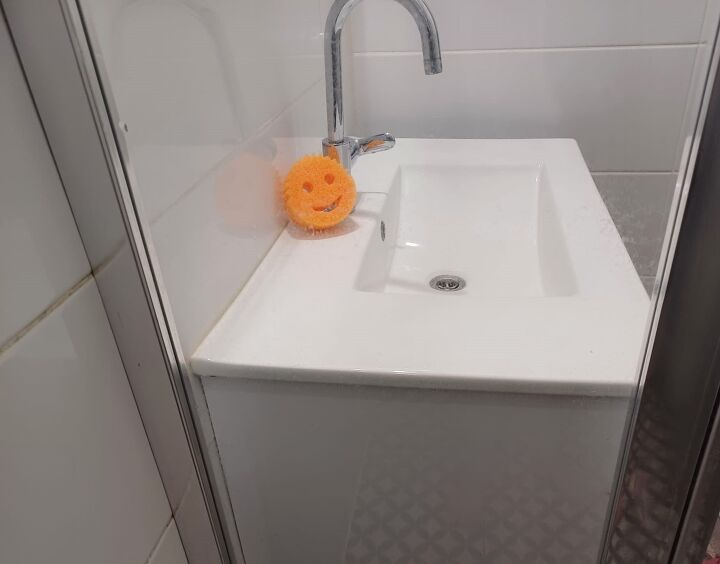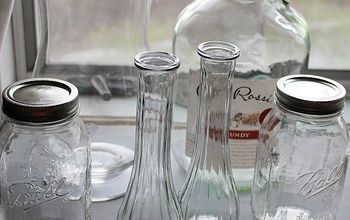Insulation is our next decision on our new home

-
We blew in insulation in the attic years ago and I regret it. Wish we had spent the money an had the regular kind put in and a floor put down. too late now as we are getting too old to worry about it! Get the conventional type even if the labor cost is more!
 Jeanette S
on Mar 09, 2013
Helpful Reply
Jeanette S
on Mar 09, 2013
Helpful Reply -
-
Need more info - like where, etc... With that said, every insulation product does have some pros & cons - if installed properly they all work fine. The biggest catch is making sure the insulation is proper for that area & it is installed properly. As for cellulose, I am not sure what you mean by sag unless you are talking about it settling. if wall cavities are packed properly, they will not settle - for attic floors, it will settle some but cellulose is not installed based on depth but rather number of bags. Pulls walls away - if you are talking about them dense packing a wall - it is possible if they up the air to much or the drywall / whatever material was not installed properly Just remember one of the biggest factors to take care of before you blow any insulation anywhere is to deal with air leakage paths & make sure any moisture issues are dealt with
 SLS Construction & Building Solutions LLC
on Mar 09, 2013
Helpful Reply
SLS Construction & Building Solutions LLC
on Mar 09, 2013
Helpful Reply -
-
Spray in foam not only insulates but air seals as well. Sometimes this has a much greater effect on the overall effectiveness. Despite all of these types, general overall passive solar, and "tight" construction can be even more effective. for an idea on these building methods check out this article. http://www.networx.com/article/passive-solar-for-beginners http://www.networx.com/blog/passive-design-trainings-begin-this-mont http://www.passivehouse.us/passiveHouse/PHIUSHome.html
 KMS Woodworks
on Mar 09, 2013
Helpful Reply
KMS Woodworks
on Mar 09, 2013
Helpful Reply -
-
I have a company coming this week to give me a quote, I am trying to make this same decision. @Jeanette S can you expanded on why you regret it? Do you have any tips or questions that we should be asking that helps determine these guys know what they are doing? Sorry @Lori Gay if I have hijacked your post.... I was just logging on to ask the same question :)
 Carroll A
on Mar 09, 2013
Helpful Reply
Carroll A
on Mar 09, 2013
Helpful Reply -
-
One thing about it is that it eventually packs down with time...and back then it was made of paper which is more of a fire hazard...???
 Jeanette S
on Mar 09, 2013
Helpful Reply
Jeanette S
on Mar 09, 2013
Helpful Reply -
-
Carroll no worries... hijack away... I am new to this whole building thing and people have been so helpful. I am more than willing to share with and steal from all!
 Lori Gay
on Mar 09, 2013
Helpful Reply
Lori Gay
on Mar 09, 2013
Helpful Reply -
-
One version of "blown in" is called dense pack. http://www.buildingscience.com/documents/insights/bsi-043-dont-be-dense This is a type of cellulose fiber that is treated for fire resistance etc, some of it is also treated with a moisture activated "glue" that helps with settling. Look at the wet spray section below. http://en.wikipedia.org/wiki/Cellulose_insulation
 KMS Woodworks
on Mar 10, 2013
Helpful Reply
KMS Woodworks
on Mar 10, 2013
Helpful Reply -
-
Properly applied cellulose dense packed insulation should settle no more then at most 1 inch in its life time. Applied at 3 lbs per square foot it is pumped into the wall cavities. The difficult part or this application is that it oftentimes has voids in which the insulation never reaches. And because it cannot be seen with radiant cameras, you will never know until its really cold or really hot out if you were successful in applying it. This of course assumes your putting this in the walls when they are finished. Another issue with dense packing walls is blow outs. If the walls are older and the application is done incorrectly, to much pressure can be applied to the walls causing the dry wall or the plaster to give way and bow the wall or break right through. So choosing a good quality contractor is really important in this application. Still another issue is wiring issues. If the walls have old knob and tube wiring, you cannot bury that in dense pack insulation due to fire risks. While the insulation really does not burn, it can cause issues with the wires when it packs into the wall area. In fact any insulation used cannot bury or encapsulate knob and tube wires due to safety issues with the wires themselves. If the walls are open, Dense packing can be achieved using a net system or a wet application method. Both work well, offer great performance and help stop air flows in the wall cavities. But again both require a quality installation contractor who knows how to do this job properly and once up followed in a few days by the drywall to prevent from falling down or bowing out. Spray foam or injected foam is really a better choice. Even if there is insulation left in the walls. It is more expensive, but its application can be monitored due to heat created when its applied. A insulation person is using a thermal imaging camera on the inside while the application person is putting it into the walls from the outside. The heat shows them if there are voids due to framing issues that are not getting the foam. So they can drill other holes and fill those locations. As the foam expands it compresses any insulation that is inside the wall cavities. And each inch of foam runs around R7 or close to it. So a wall that is 3.5 inches thick ends up somewhere around R-21 or so. Much higher then blown in cellulose. lastly. The very first thing you need to do before you even start doing any insulation work is to determine exactly where your house is leaking energy and where air is coming in and leaking out. Have a blower door energy evaluation done on your home. The technician will install a blower into the front door and when its running it will simulate a 20 mph breeze hitting your house on all sides. It will show you exactly where your heat is leaving and entering into your home. Doing this first will save you hundreds not only in getting the insulation done properly but show you exactly where it will make the most difference first saving you the most amount of money. Also having a BPI certified energy audit done, you will get your home checked for safety issues to assure you do not make it to tight and also will be able to find out about any government programs that may be available to seal and insulate that you may not be aware of otherwise. In my state NJ owners are getting $5,000 back on rebate and 0% financing up to ten grand. As long as they can save up to 25% off with their energy bill. And that is done pretty easy with most homes with little effort. Remember the ABC of insulation. Attic, Basement, Center of home. Do the attic first,. Air seal all gaps, pipes, chimneys, and wire openings first. Then insulate that area. Then go into the basement.. Do the sills, seal off any pipe, wire, chimney locations using foam, metal etc to stop air flowing up the rooms and attic above. Once that is done, air seal and insulate all sill areas using foam board and can spray foam to seal them tight to the framing. Or of course you can have those areas spray foamed if you do not want to do it yourself. Once that is done, then you spend your money on air sealing the middle of the house. Seal all gaps around windows, doors, outlets and lights using gaskets or caulk. It is then you should spend your money on wall insulation. This is where you will get the least payback for your efforts with attic being #1 followed by your basement being #2.
 Woodbridge Environmental Tiptophouse.com
on Mar 13, 2013
Helpful Reply
Woodbridge Environmental Tiptophouse.com
on Mar 13, 2013
Helpful Reply -
Related Discussions
How do we build a cheap front porch for our new mobile home?
How do I clean salt marks on my salt water pool?
My salt water pool leaves white marks all around the pool I have tried everything to remove them with no luck. Can someone please help me????
If you could redo your master bathroom, what would you change?
Dreaming of a master bathroom remodel?Tell us: If you could change just one thing, what would it be?Your input could inspire others looking for master bathroom ideas ... See more
Hardwood Floors or Carpet in Bedroom: What's Your Preference?
Hey Hometalkers! We've got a cozy debate going on here: when it comes to bedroom flooring, do you lean towards the warmth of carpet or the timeless elegance of hardwo... See more
What can I do about wood smoke coming into my house?
I need help. My back door neighbor heats with a wood stove all winter. They are downhill from me. Almost all their smoke makes its way into my house, causing headache... See more
How to find out the value of antique furniture
My husband and I are looking to sell his grandmother's dining room set but, we have no idea what to ask for it. We could not find any markings as to who made it, all ... See more



